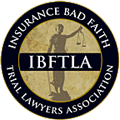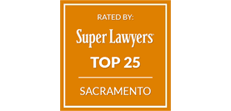What Qualifies as Wrongful Death in California?
Losing a loved one under unforeseen circumstances, such as a fatal car accident or workplace injury, is devastating. No one can prepare for the unexpected loss of a loved one. Negligence, recklessness or malicious intent to harm in connection with your relative’s death can make it even more difficult to grieve and move forward. Although filing a wrongful death lawsuit will not fix everything, it can provide much-needed financial relief for you and your family during this tough time. It could also deliver justice by holding the defendant accountable for the death. You may or may not qualify to bring a wrongful death claim in California depending on the circumstances.
California’s Definition of Wrongful Death
A key to your wrongful death claim will be California’s definition of this civil tort. Each state’s definition of wrongful death varies slightly, although most share the same general principle. California Code of Civil Procedure section 377.60 defines wrongful death as a fatality caused by someone else’s wrongful act or neglect. This is a broad definition that can encompass many different wrongful, negligent, reckless or criminal actions by a defendant.
- Driving drunk
- Driving distracted
- Breaking traffic laws
- Ignoring property safety
- Failing to provide safety gear to workers
- Neglecting to properly train employees
- Producing a defective or dangerous product
- Breaching medical industry standards of care
- Intentionally committing a violent crime
An action or omission resulting in someone’s death might qualify as wrongful if another person or party would not have committed the same action under similar circumstances. If the defendant reasonably should have done more to prevent the fatal accident, he or she might be liable for the victim’s death in California.
Elements Necessary to Prove a Wrongful Death Claim
In California, the parties that may file claims for wrongful death are the deceased person’s surviving spouse, domestic partner, child or anyone entitled to the decedent’s property by intestate succession (in the absence of surviving issue of the decedent). This party – or his or her attorney – will have to prove certain elements are more likely to be true than not true for a successful wrongful death claim.
- The defendant owed the deceased person a duty to exercise reasonable care.
- The defendant did not fulfill his or her duty of care to the decedent.
- The defendant’s act of negligence caused the death in question.
- The plaintiff(s) suffered compensable damages because of the defendant’s breach of duty.
The plaintiff during a wrongful death claim will have to meet the same burden of proof the deceased person would have had he or she survived to file a personal injury lawsuit. This often means providing proof that the defendant owed the decedent a duty of care and breached this duty. Some cases, however, do not require proof of negligence. Work with a wrongful death attorney for information about your particular case.
Wrongful Death Statute of Limitations
Act quickly if you believe a loved one’s death in California qualifies as wrongful. If you do have grounds for a claim, you will need to file by the state’s statute of limitations for the courts to hear your case. The statute of limitations gives a deadline of no more than two years from the date of your loved one’s death to file a claim. If you miss your time limit, the civil courts will more than likely refuse to hear your case.
You might have less than two years to bring a claim if the party allegedly at fault for your loved one’s death is a government entity. You could have more than two years, however, if an exception to the rule applies to your case. If your case involves a crime such as homicide, for example, the civil courts might toll your deadline to two years from the completion of a criminal case involving the same defendant. Contact a Sacramento personal injury lawyer in California for information about your exact deadline to file.

















